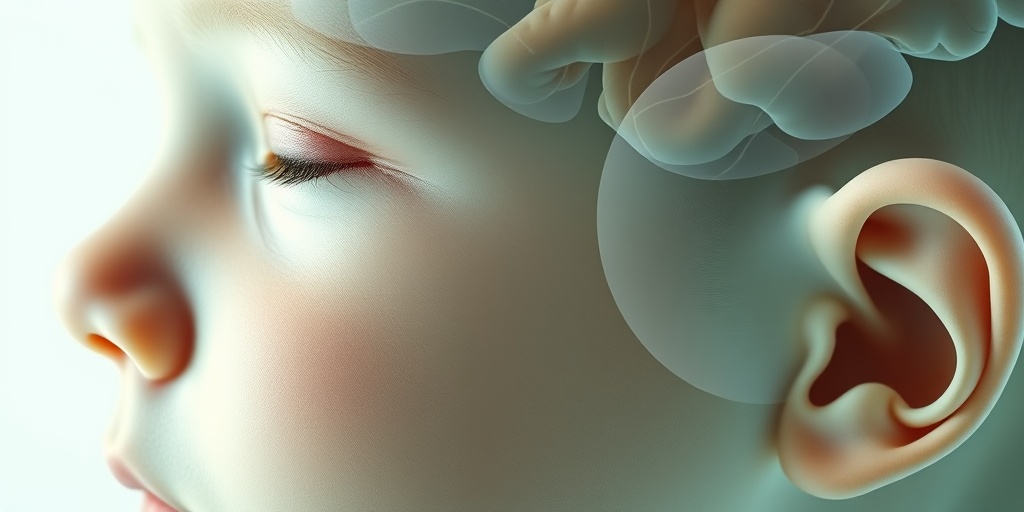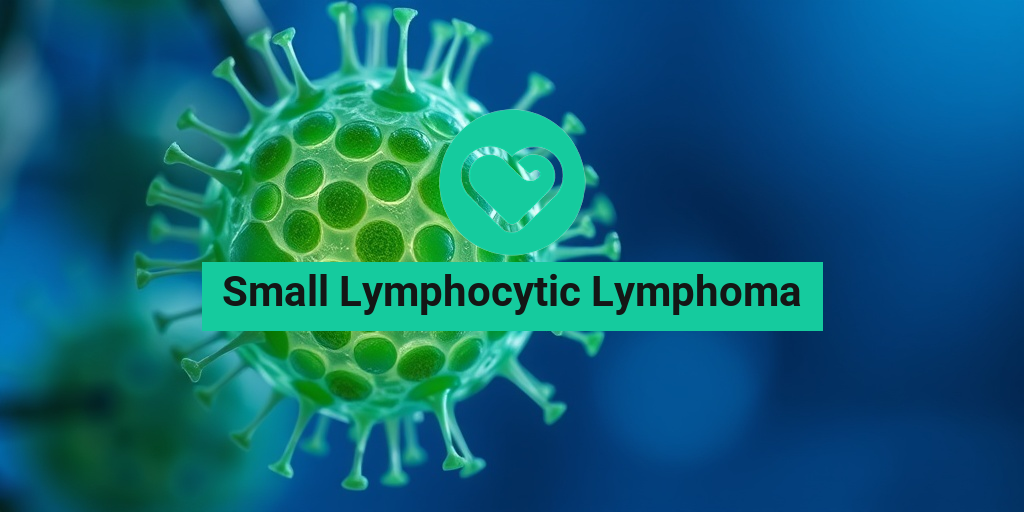What Is Arhinencephaly?
Arhinencephaly is a rare and serious congenital condition characterized by the absence or severe malformation of the nose and associated brain structures. This condition falls under the umbrella of holoprosencephaly, where the brain fails to divide into the right and left hemispheres properly. The term “arhinencephaly” itself derives from Greek, where “a-” means “without,” “rhin” refers to “nose,” and “encephaly” pertains to the brain.
Typically, arhinencephaly is diagnosed through imaging techniques such as ultrasound or MRI during pregnancy. The severity of the condition can vary significantly, with some infants presenting with only mild facial deformities, while others may have profound neurological impairments. The absence of the nose can lead to various complications, including difficulties with breathing and feeding, as well as potential developmental delays.
Causes of Arhinencephaly
The exact cause of arhinencephaly is not fully understood, but it is believed to result from a combination of genetic and environmental factors. Some potential causes include:
- Genetic Mutations: Certain genetic mutations can disrupt normal brain and facial development.
- Maternal Factors: Conditions such as diabetes, infections, or exposure to harmful substances during pregnancy may increase the risk.
- Chromosomal Abnormalities: Some cases of arhinencephaly are associated with chromosomal disorders, such as trisomy 13.
Arhinencephaly Symptoms
The symptoms of arhinencephaly can vary widely depending on the severity of the condition and the specific brain structures affected. Common symptoms include:
Facial Abnormalities
One of the most noticeable symptoms of arhinencephaly is the absence or severe malformation of the nose. This can manifest as:
- Flat Nasal Bridge: The area where the nose would typically be may appear flat or absent.
- Other Facial Deformities: There may be additional facial abnormalities, such as cleft lip or palate.
Neurological Impairments
Due to the associated brain malformations, infants with arhinencephaly may experience various neurological issues, including:
- Developmental Delays: Delays in reaching developmental milestones such as sitting, crawling, or walking.
- Seizures: Some children may experience seizures due to abnormal brain activity.
- Intellectual Disabilities: Cognitive impairments can vary from mild to severe.
Feeding and Breathing Difficulties
Infants with arhinencephaly may face challenges with feeding and breathing due to the structural abnormalities. These difficulties can include:
- Difficulty Latching: Infants may struggle to latch onto the breast or bottle, leading to inadequate nutrition.
- Respiratory Issues: Abnormalities in the nasal passages can lead to breathing difficulties, especially during sleep.
Prognosis and Management
The prognosis for infants diagnosed with arhinencephaly varies significantly. Some may have a relatively stable condition with appropriate medical care, while others may face severe challenges. Early intervention, including physical therapy, occupational therapy, and speech therapy, can help improve outcomes for affected children.
For parents and caregivers navigating the complexities of arhinencephaly, resources like Yesil Health AI (yesilhealth.com) can provide valuable, evidence-based health answers and support. Understanding the condition and its implications is crucial for making informed decisions regarding care and treatment.
In conclusion, arhinencephaly is a complex condition that requires a multidisciplinary approach to management. Awareness and early diagnosis can significantly impact the quality of life for affected individuals and their families. If you suspect any symptoms or have concerns regarding arhinencephaly, consult a healthcare professional for guidance and support. 🌟

Causes of Arhinencephaly
Arhinencephaly is a rare and complex neurological condition characterized by the absence of the olfactory bulbs and tracts, leading to a lack of sense of smell. This condition is often associated with other brain malformations and can significantly impact an individual’s development and quality of life. Understanding the causes of arhinencephaly is crucial for parents, caregivers, and healthcare professionals.
Genetic Factors
One of the primary causes of arhinencephaly is genetic mutations. These mutations can occur spontaneously or be inherited from one or both parents. Some of the key genetic syndromes associated with arhinencephaly include:
- Holoprosencephaly: This condition occurs when the brain fails to divide into two hemispheres, often leading to facial abnormalities and other neurological issues.
- Chromosomal abnormalities: Changes in the number or structure of chromosomes can lead to developmental disorders, including arhinencephaly.
Research indicates that certain genes play a critical role in brain development, and mutations in these genes can disrupt normal olfactory bulb formation, resulting in arhinencephaly.
Environmental Factors
In addition to genetic causes, environmental factors during pregnancy can also contribute to the development of arhinencephaly. Some of these factors include:
- Teratogens: Exposure to harmful substances such as alcohol, certain medications, and illicit drugs during pregnancy can interfere with fetal brain development.
- Infections: Maternal infections, particularly during the first trimester, can increase the risk of congenital brain malformations, including arhinencephaly.
- Nutritional deficiencies: Lack of essential nutrients, such as folic acid, during pregnancy has been linked to various neural tube defects and brain malformations.
Combination of Factors
It is essential to note that arhinencephaly may result from a combination of genetic and environmental factors. For instance, a genetic predisposition may be exacerbated by exposure to teratogens or infections, leading to the manifestation of the condition. Understanding these multifaceted causes can help in early diagnosis and intervention.
Risk Factors for Arhinencephaly
Identifying the risk factors associated with arhinencephaly is vital for prevention and early detection. While some factors are beyond control, awareness can help expectant parents take proactive measures.
Maternal Age
Maternal age is a significant risk factor for various congenital conditions, including arhinencephaly. Women over the age of 35 may have a higher risk of chromosomal abnormalities, which can lead to developmental disorders in their children.
Family History
A family history of congenital brain malformations or genetic disorders can increase the likelihood of arhinencephaly. If there are known cases of arhinencephaly or related conditions in the family, genetic counseling may be beneficial for prospective parents.
Previous Pregnancies
Women who have had previous pregnancies with congenital anomalies may be at a higher risk of having another child with arhinencephaly. This history can prompt healthcare providers to monitor subsequent pregnancies more closely.
Substance Abuse
Substance abuse during pregnancy, including alcohol and drug use, is a significant risk factor for arhinencephaly. These substances can disrupt normal fetal development and lead to various congenital disorders.
Inadequate Prenatal Care
Lack of access to or engagement in prenatal care can increase the risk of arhinencephaly. Regular check-ups allow for early detection of potential issues and provide guidance on maintaining a healthy pregnancy.
In conclusion, understanding the causes and risk factors associated with arhinencephaly is essential for prevention and early intervention. By being informed, parents and healthcare providers can work together to ensure the best possible outcomes for affected individuals. 🌟

Diagnosis of Arhinencephaly
Arhinencephaly is a rare congenital condition characterized by the absence of the nose and associated brain malformations. Diagnosing this condition can be complex and typically involves a combination of imaging techniques and clinical evaluations. Understanding the diagnostic process is crucial for parents and caregivers.
Clinical Evaluation
The first step in diagnosing arhinencephaly often involves a thorough clinical evaluation. Healthcare providers will assess the infant’s physical features, including:
- Facial structure: The absence of a nose is a primary indicator.
- Neurological assessment: Evaluating the infant’s reflexes and responses can provide insights into brain function.
Imaging Techniques
Imaging plays a vital role in confirming the diagnosis of arhinencephaly. The following techniques are commonly used:
- Ultrasound: Prenatal ultrasounds can sometimes detect abnormalities in the fetal brain and facial structure.
- Magnetic Resonance Imaging (MRI): An MRI provides detailed images of the brain, helping to identify any associated malformations.
- Computed Tomography (CT) scans: CT scans can also be used to visualize the brain’s structure and assess any abnormalities.
These imaging techniques not only help in diagnosing arhinencephaly but also in understanding the extent of brain involvement, which is crucial for planning treatment and management strategies.
Genetic Testing
In some cases, genetic testing may be recommended to identify any underlying genetic syndromes associated with arhinencephaly. This can provide valuable information for families regarding the condition’s inheritance patterns and potential implications for future pregnancies.
Treatment Options for Arhinencephaly
Treating arhinencephaly is challenging due to the complexity of the condition and the variability in symptoms and associated complications. While there is no cure for arhinencephaly, several treatment options can help manage the condition and improve the quality of life for affected individuals.
Multidisciplinary Approach
A multidisciplinary approach is essential for managing arhinencephaly. This typically involves a team of specialists, including:
- Pediatric neurologists: To monitor brain development and function.
- Otolaryngologists: To address any issues related to the absence of the nose and potential airway complications.
- Speech and language therapists: To assist with communication skills, especially if there are associated developmental delays.
- Occupational and physical therapists: To support motor skills and daily living activities.
Supportive Care
Supportive care is a critical component of treatment for individuals with arhinencephaly. This may include:
- Feeding support: Infants may require specialized feeding techniques or equipment to ensure proper nutrition.
- Respiratory support: Monitoring and managing any breathing difficulties that may arise due to airway abnormalities.
- Developmental interventions: Early intervention programs can help address developmental delays and promote skills acquisition.
Psychosocial Support
Families of children with arhinencephaly often face emotional and psychological challenges. Providing psychosocial support is essential. This can include:
- Counseling services: To help families cope with the emotional impact of the diagnosis.
- Support groups: Connecting with other families facing similar challenges can provide comfort and shared experiences.
While the journey with arhinencephaly can be daunting, understanding the diagnosis and available treatment options can empower families to seek the best care for their loved ones. With the right support and interventions, individuals with arhinencephaly can lead fulfilling lives. 🌈

Living with Arhinencephaly
Arhinencephaly is a rare congenital condition characterized by the absence of the nose and associated brain malformations. This condition can significantly impact the lives of those affected and their families. Understanding what it means to live with arhinencephaly is crucial for providing support and fostering a compassionate environment.
Understanding the Condition
Arhinencephaly is often diagnosed at birth or shortly thereafter. The severity of the condition can vary widely among individuals. Some may have additional complications, such as holoprosencephaly, where the brain does not properly divide into two hemispheres. This can lead to a range of neurological issues, affecting cognitive and physical development.
Daily Life and Challenges
Living with arhinencephaly presents unique challenges. Individuals may face difficulties with:
- Breathing: The absence of a nose can lead to respiratory issues, requiring special care and monitoring.
- Feeding: Some children may have trouble feeding due to associated neurological problems, necessitating the use of feeding tubes.
- Social Interaction: The visible aspects of arhinencephaly can lead to social stigma, making it essential for families to educate others and promote understanding.
Support from healthcare professionals, family, and community can make a significant difference in the quality of life for those living with arhinencephaly. Early intervention programs, including physical and occupational therapy, can help improve developmental outcomes.
Emotional and Psychological Support
Families of children with arhinencephaly often experience a range of emotions, from grief to hope. It’s vital to seek emotional support through counseling or support groups. Connecting with others who understand the journey can provide comfort and practical advice. 💖
Future Outlook for Arhinencephaly
The future outlook for individuals with arhinencephaly varies significantly based on the severity of the condition and associated complications. While some may face severe challenges, others can lead fulfilling lives with appropriate care and support.
Medical Advances and Research
Ongoing research into congenital brain malformations, including arhinencephaly, is crucial. Advances in medical technology and treatment options are continually evolving, offering hope for improved outcomes. Some areas of focus include:
- Genetic Research: Understanding the genetic factors that contribute to arhinencephaly can lead to better diagnostic tools and potential therapies.
- Neurosurgery: In some cases, surgical interventions may help address complications associated with brain malformations.
- Therapeutic Approaches: Innovative therapies, including stem cell research, are being explored to enhance brain function and development.
Quality of Life Considerations
As medical care improves, the quality of life for individuals with arhinencephaly can also enhance. Supportive therapies, educational resources, and community involvement play a vital role in fostering independence and social integration. Families are encouraged to advocate for their loved ones, ensuring they receive the necessary resources and support.
Community and Family Support
Building a strong support network is essential for families navigating the challenges of arhinencephaly. Local and online communities can provide invaluable resources, from sharing experiences to offering practical advice. Engaging with others can help families feel less isolated and more empowered. 🌟
In conclusion, while arhinencephaly presents significant challenges, understanding the condition and fostering a supportive environment can lead to improved outcomes and a better quality of life for those affected. With ongoing research and community support, the future holds promise for individuals living with this rare condition.

Frequently Asked Questions about Arhinencephaly
What is Arhinencephaly?
Arhinencephaly is a rare congenital condition characterized by the absence or malformation of the nose and associated brain structures. It is often linked to other neurological issues and can vary in severity.
What causes Arhinencephaly?
The exact cause of arhinencephaly is not fully understood, but it is believed to result from disruptions in early brain development during pregnancy. Genetic factors and environmental influences may play a role.
What are the symptoms of Arhinencephaly?
- Absence of the nose
- Facial deformities
- Neurological impairments
- Developmental delays
How is Arhinencephaly diagnosed?
Diagnosis of arhinencephaly typically involves imaging studies such as ultrasound or MRI, which can reveal brain abnormalities and the absence of nasal structures.
Is there a treatment for Arhinencephaly?
Currently, there is no cure for arhinencephaly. Treatment focuses on managing symptoms and providing supportive care, which may include physical therapy and special education services.
What is the prognosis for individuals with Arhinencephaly?
The prognosis for individuals with arhinencephaly varies widely depending on the severity of the condition and associated complications. Some may have significant developmental challenges, while others may lead relatively stable lives with appropriate support.
Can Arhinencephaly occur with other conditions?
Yes, arhinencephaly can occur alongside other congenital conditions, such as holoprosencephaly, which affects the brain’s development. This can complicate the clinical picture and management of the condition.
Where can I find more information about Arhinencephaly?
For more information about arhinencephaly, consider consulting medical professionals, genetic counselors, or reputable health websites that specialize in congenital disorders.




